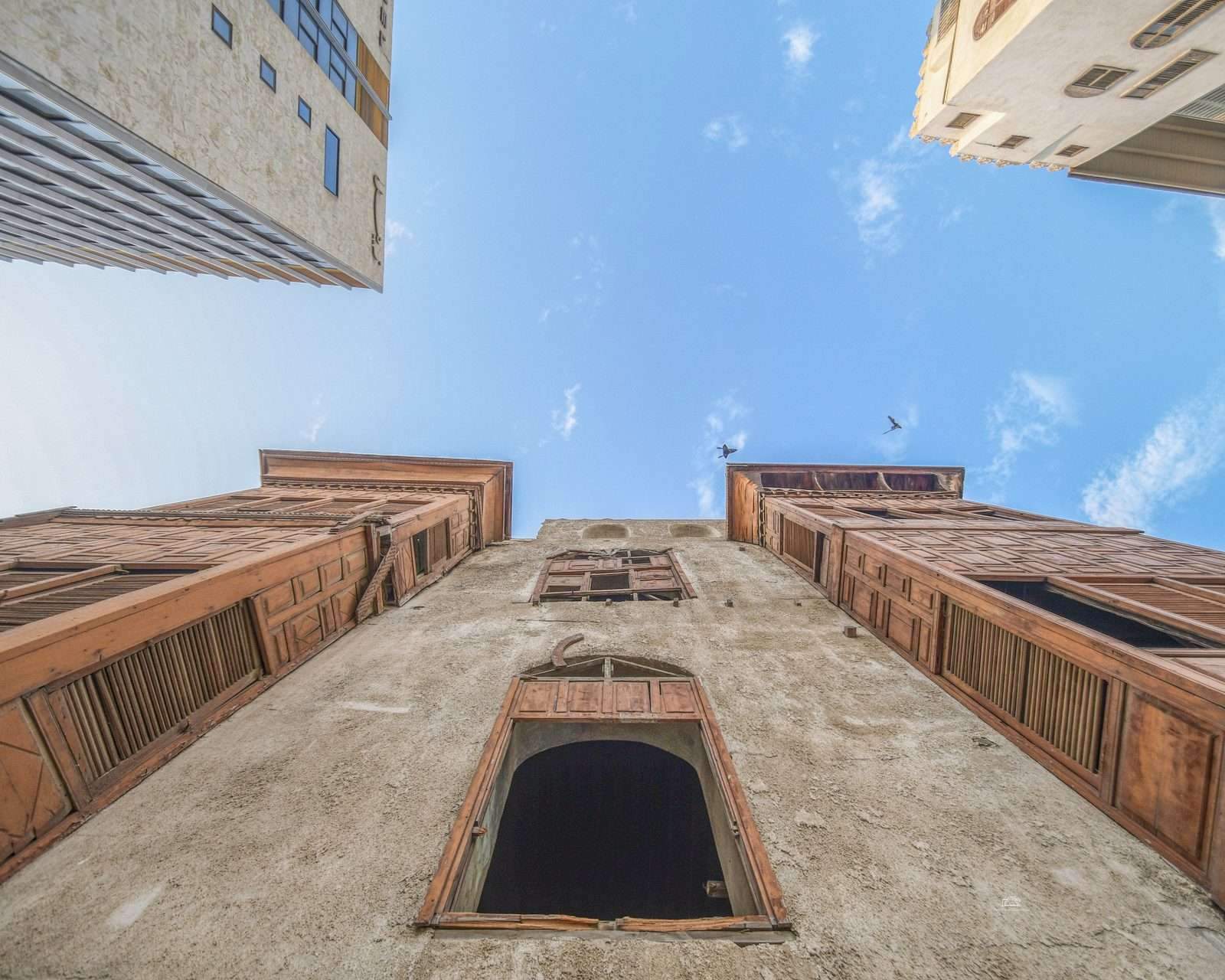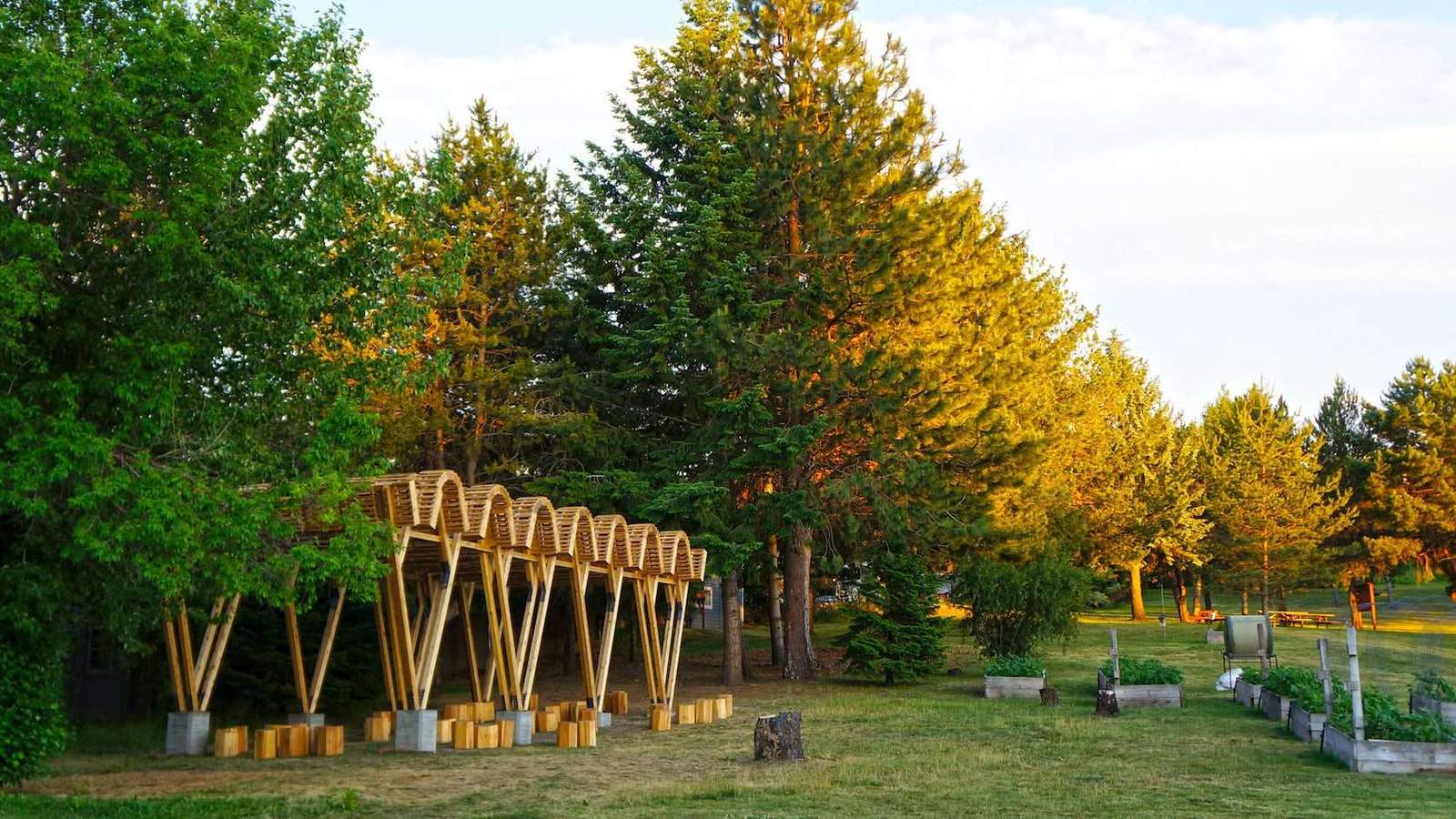Experimenting with new ways of shooting is a great way to showcase your skills,
and sometimes, a fresh perspective is all you need to unlock a whole new world of creativity.
The Worms Eyeview image is very good, very simple,
as the shots can draw the viewer’s eye into a slight small print or enlarge it.
You can also use exclusive objects in the foreground to mix up your photos.

What is Worm’s Eye View imaging?
Since most humans decide to photograph the world around us, we often don’t look straight when taking pictures.
But Worm’s Eye View photos are exactly that – a shot looking straight up or from a very low angle.
Despite the name, you don’t have to be lying on the ground like a worm,
you can take pictures looking at a tall building or anything unique.
This shot style provides a new perspective on a recognizable subject,
making it appear taller, conveying a great feeling to the viewer,
and you can even use this visual factor to tell a story in your photos.
This shot technique grounds your point of view against the objects in the photo,
it helps your images to transition and appear tactile and full of depth.

A great example is Worm’s Eye View, mixed with a long exposure of the night sky.
And the larger natural viewing method is the bird’s eye view – shots looking straight down.
Think of Worm’s Eye View photography, on the other hand, it’s quite the opposite,
if you decide to practice this shooting style, you can discover the thinking in this article
How to take Worm’s Eye View photos:
Five tips for beginners
To take great pictures with Worm’s Eye View, you need to set the camera up.
Either lie flat or sit down with the camera handle up,
and if you struggle to keep your photos steady by hand, a tripod or monopod will eliminate that problem.
You can also use the remote control or a mobile app that takes snapshots, if your camera is compatible.
And you can either shoot directly into the sky or towards an object at an angle.
One of the advantages of a Worm’s Eye View shot is how it holds pictures.

Where you can also get a giant light and measure the results with your targets.
You can fit block challenge objects of different sizes in your frame.
While aiming your camera seems simple, getting the most out of this method can be challenging.
And we’ve put together 5 top tips to help you improve your Worm’s Eye View photography.

-
Go to the guide to deal with the light
Like many exceptional photo techniques, slight is vital to achieving stunning images.
And since you’ll be shooting straight or at an angle, you’ll likely be hitting a lot of light into the lens.
While the camera settings and auto exposure can also be high enough in some situations, it’s okay to shoot manually.
Then be sure to meter the exposure of your image,
and you will also choose to scan using the aperture.
Then try setting your aperture around f/8 – f/11,
this will limit the amount of light pressure on the sensor.
The reverse can also be true, if you’re shooting in low light,
a wide aperture will probably work better.

And if you don’t make an exposure adjustment, your photos will lack sharpness and contrast, and you may also find that your pix is washed out and overexposed.
Using a low ISO will help keep the subject in your shot, at large with a wide angle lens.
Experiment with ISO values between 200 and 400 to complete the exposure triangle, and using a higher shutter speed can help keep things sharp and well-focused.
Keep in mind that you will probably have to compensate for reflections and flare if you are photographing architecture.
-
Use different lenses for different shots
You can take a look with different lenses, depending on what you choose to capture in the shot.
And a standard 35-70mm lens can work great, especially with a great mount.
It allows you to take a normal shot of Worm’s Eye View,
but if you choose to make your photography stand out, consider a wide-angle lens.
Don’t go for the massive wide angle and you prefer the distortion that comes with it.
The wider sight self-discipline function you can get further into shot formation.
Because this is really useful when you’re shooting from the ground,
and wide-angle lenses are great for taking amazing photos of forests, mountains,
and architecture.
They allow you to get more block, making your shot view unnaturally stretched.
And for the wide angle, stick to the 24-35mm lens,
it’s notable for snapping snapshots of all the objects in your composition with sharpness.
Another option is the fisheye lens, these are great for getting more creative and anamorphic shots.
And it works right if you choose to make adjustments in post-production,
or if you shoot your script up close.
The ultimate option is the telephoto lens’ and if you choose to grab some distant objects in Worm’s Eye View, this is the wish lens for you.
As an added benefit, they also offer a variable focal length.
-
Get creative with your composition
Like any other technique, composition is crucial, consider what you can put in your shot to make it more unique or eye-catching.
How do you use shadow, silhouette, and light in your approach?
Knowing the basic recommendations for composition will usually improve your shots.
And don’t forget the rule of thirds! This is key if you’re taking pictures of symmetrical objects or patterns.
Working with the rule of thirds is form and pattern,
and consider how you can create focal point and intrinsic movement in your shot.
Take the example of an image looking at a wooded landscape,
where the shapes of the trees and the sinuous wooded canopy create patterns, flow, and direction.
Worm’s Eye View photos are great for capturing photo geometry,
depicting mosaic ceilings or ornate brickwork aligned flawlessly in a photo taken from below.
Balance objects in your images, and suppose if you choose to center interest at a particular point,
this should not be an object but an alternative factor within your frame.
In essence, show what is attractive, and do its best to maximize what is conceivable in your worm-eye photography.
-
Scroll the remote to get sharper images
Maintaining your natural position while lying on the ground or in a certain perspective can be difficult.
A monopod or tripod can help you align your shot, so if your camera is compatible, you should mix it up with a remote trigger.
Even the most accomplished photographers will trigger the camera with a slight shake when taking the shot.
Using the remote trigger eliminates applicable camera shake, which is exceptional for macro shots.
It’s also a good quality to direct your attention as soon as your camera is stationary,
so if you’re aiming to take a picture of an animal, your turn away from the digital camera may also be key.
If you’ve been waiting for slight rotations or for your project to align flawlessly, using spacing can keep you from straining again.
And if you’re taking pictures from a worm’s-eye view, you might also want to use the camera’s self-timer.
This locks focus, allowing you to select an area of objects in the frame.
-
Experiment with depth of field and focus
To accentuate your difficulty, you need to be aware of the depth of field and the focal point of your shot.
And you can change the depth of issue in your image to highlight subjects and stay sharp,
as the depth of the area in the image furthermore affects how heaps of your subject focus.
If you’re taking pictures of things like flowers or plant life up close, a shallow depth of field works perfectly.
The wider depths of field is great for tall compositions or wide-angle photos,
and if you want to draw in focus factor on a specific object of your image, make sure to understand depth of field positively.
Conclusion
Worm’s Eye View shot offers excellent capabilities,
this orientation is perfect for getting great sketches of woodland scenes and cityscapes.
Moreover, it is a good choice for wildlife photography,
as architecture and large pixels of flowers and objects look great.
Long exposures with a fixed worm-eye setting can be an astrophotographer’s dream,
and Worm’s Eye View photography is creative, simple, and full of possibilities.
You can begin teaching Worm’s Eye View images with minimal equipment and experience,
which is what makes it such a versatile approach.
Whether you are a professional photographer or a beginner, you can include it in your arsenal.
Try this method the next time you shoot, usually at ground level,
the world around us makes a lot of sense for quick, eye-level shots.
For more architectural news
Playing with abstract geometry to design Future Artspace H in Shantou







